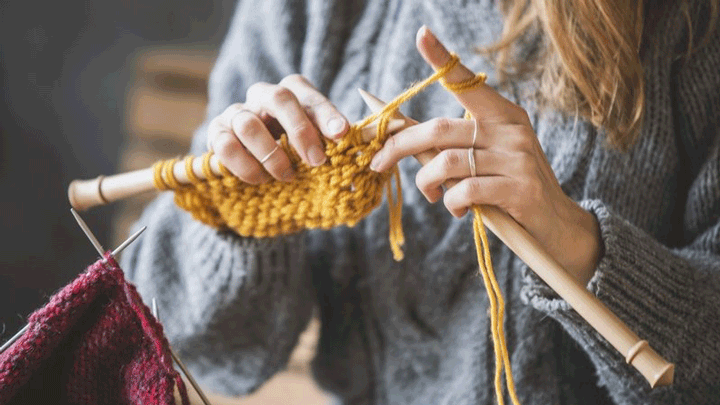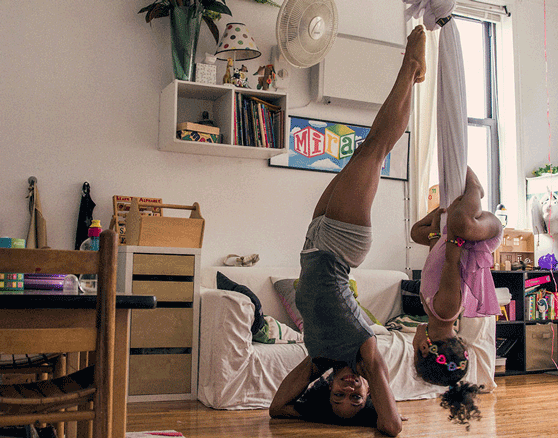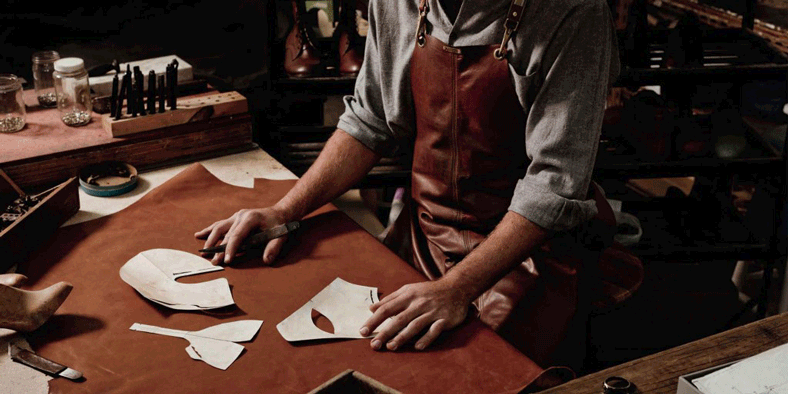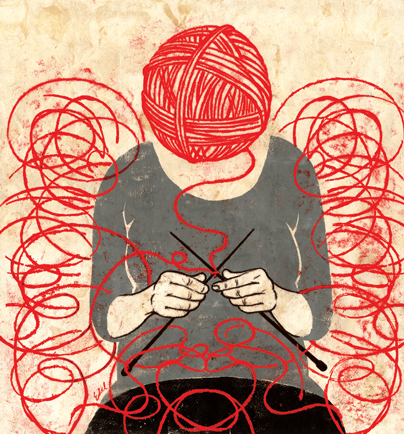The COVID-19 pandemic continues to raise new challenges, triggering anxiety, stress, and isolation. Societies have adapted to restrictions, creating a new normal; however, many of these creative solutions will not be available as winter arrives, and cold weather prevents outside activities. One solution to begin easing personal anxiety, stress, and isolation during this time is crafting. Studies have shown that crafting and creating can increase feelings of peace, pride, and accomplishment, encourage socialization, and decrease negative thoughts and stressors. Crafting can become an activity of relief for many during the hard months of 2020 and 2021.
One of the primary reasons crafting and creating can lead to calm and peace is its meditative qualities. Needlecrafts like knitting and crocheting are popular choices for relaxing at home crafts. Most needlecraft projects are guided with a planned pattern. The pattern will require the artist to prioritize precision and craftsmanship. When the human brain interacts with and experiences a pattern, feelings of fear and anxiety can lessen. In “Managing anxiety in eating disorders with knitting,” 38 women with anorexia nervosa (a neurological eating disorder) admitted to a specialized eating disorder unit were given knitting lessons and supplies. At the end of the study, 74% of the women expressed that the intensity of their fears decreased while knitting. The reduction of anxiety can be attributed to the pattern of knitting projects and the psychological concept of “flow.”

Arts Help Journalist Deanna Parenti interviewed Kathryn M. Westcott, Ph.D., Charles A. Dana, Professor of Psychology at Juniata College in Huntingdon, Pennsylvania, to discuss research around mental health and crafting. Dr. Westcott described Mihaly Csikszentmihalyi’s term “flow” as the automaticity and second nature patterns in peoples’ lives. They are patterns where individuals become so entranced by the task or design at hand that they block out other thoughts, including thoughts of negativity, anxiety, or stress.
“Flow” can be closely related to meditation. When meditating, the goal is to learn to be mindful of the present moment and block out everything else. In some meditation practices, patients are asked to focus on their breath to remain in the present. Dr. Westcott points out that while the patterns of crafts like knitting can be meditative, the artist can also focus on the clicking of the needles or the yarn’s swish to ground them, similar to breathing techniques.
Although knitting has been a highlighted craft in the studies about crafting and mental health, Dr. Westcott explained that these positive benefits would be most effective with the task’s enjoyment. Knitting is not the only at home artistic expression that has gained popularity. The concept of “flow” in relation to creating can be applied to playing an instrument, choreographing a dance, woodworking, pottery, painting, journaling, and more. The mindfulness and meditation behind creating leads to focused attention, decreasing feelings of fight or flight and anxiety. According to Dr. Westcott, “It is important to find things you enjoy for your time that gives you space to relax. In our society, we are so “go, go, go.” Embrace some of this extra time from COVID-19 restrictions and challenge yourself to relax.”

The relief from crafts can be applied in several different areas. For instance, Cindy Hasio examines how crafts benefit veterans in “Searching the Soul: Veterans and Their Arts and Crafts.” Hasio volunteered at the Dallas Veteran Medical Center in Dallas, Texas. The center has a crafting room that serves as a form of therapy and socialization. One of the volunteer instructors, Mike, a veteran himself, spoke with Hasio about his reasons for crafting. He explains that creating handmade leather goods makes him calmer, “When I start weaving the thread, it’s like I am not thinking about what’s happening in my life. It makes me feel calm as if time doesn’t exist...If you take the thread and weave it through the leather, it almost becomes a rhythm.” Inspired by the relaxing and meditative feelings of crafting, Mike wanted to teach other veterans his craft. Hasio further recorded that the veterans sincerely enjoyed the crafts and that the room provided a safe place for casual socialization.

Dr. Westcott agreed with this observation, adding that crafting aids in socialization because of the tradition of group crafting. Knitting, sewing, and even potters groups have been meeting online for socialization even before the COVID-19 pandemic. Makers can talk about their projects, research experimental techniques, and ask questions. Crafting can help bring calm to an inner mind while also pushing a person to widen their social circle or reignite an old one. During pandemics and winter itself, it can be easy to become socially isolated, and crafting groups provide an excellent community for interested artists.
When working on projects, the artist will have a tangible object to assess their progress. This object generates a reward for their brains because there is a sense of progress in complex creation. For example, in the study of the 38 women with anorexia nervosa and their mental experience with knitting, over half the group reported that knitting gave them a sense of pride and accomplishment. In recent years, many societies have attributed certain activities to be relaxing like watching Netflix, taking a bath, or doing yoga. All these activities are great forms of relaxation; however, they are also all forms of consumption. The act of creating something tangible, something that can be used and/or given away can create a whole different feeling and sometimes more beneficial form of peace.
Dr. Westcott explained that these feelings of pride and accomplishment when crafting can be increased by creating a project meant for someone else. Intention behind creation lends itself to a sense of purpose and motivation. Prior to COVID-19, wildfires raged throughout Australia; consequently, wildlife, especially koalas and baby kangaroos, struggled. Needle crafting groups formed by the hundreds, and made pouches for motherless baby kangaroos and burn mittens for harmed koala paws. These groups found a cause to channel their energy in, providing a new facet of support in a trying time.
Dr. Westcott points out that many of these feelings, especially anxiety relief, will not be beneficial if crafting/creating is not consistent. Dr. Westcott noted modern societies are heavily results-based and fast-paced, leaving little down-time in schedules. Dr. Westcott explains, “the more you do it, the easier it gets. Start with only fifteen minutes a day and then slowly increase with personal comfort, but stay consistent”. Consistency is often key to the best psychological results. Moreover, the COVID-19 pandemic has drastically interrupted personal schedules, suggesting that consistency with relaxing crafting/creating time can help develop stability.

Whether it’s taking fifteen minutes a day to work on a knitted blanket or scrolling through YouTube to learn how to sew tote bags for your friends, consider taking up crafting this winter. The online community is full of beginner’s tutorials and crafting groups, and there is an endless number of creative outlets to try. Remember, consistency is key; take time each day or week to create an object that brings pride, peace, joy, and relief.
